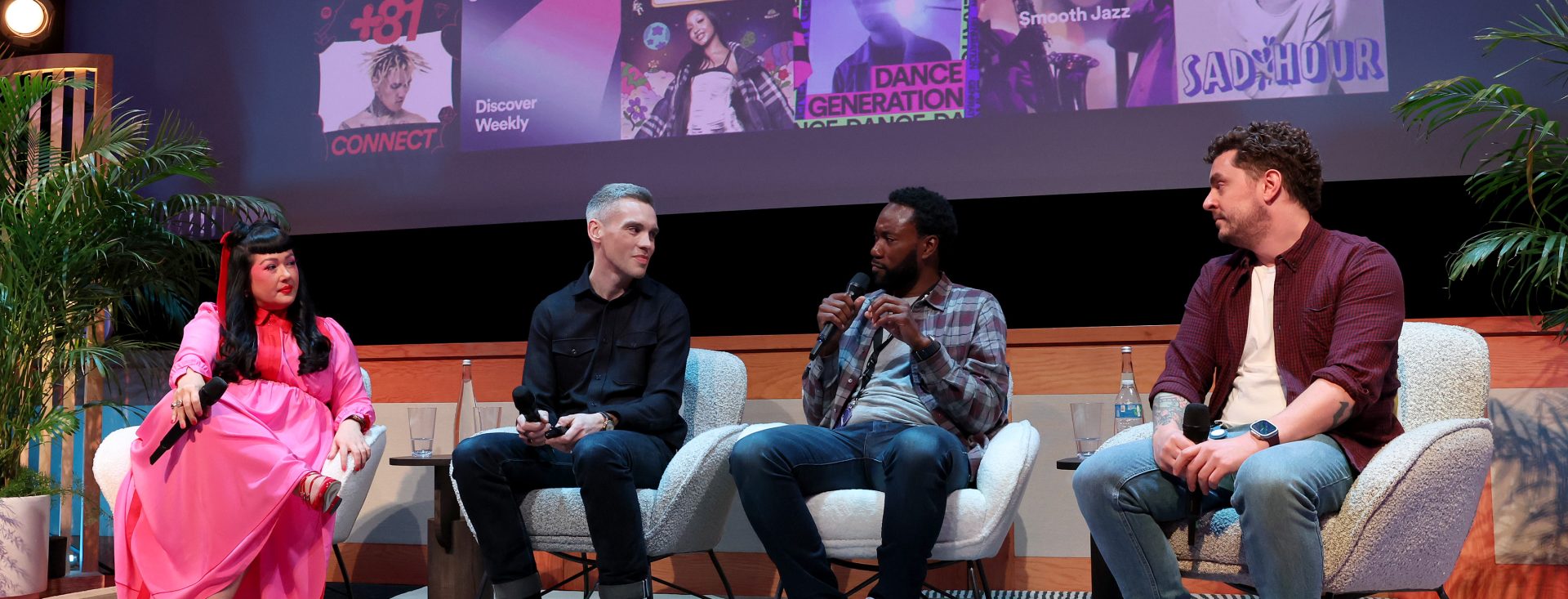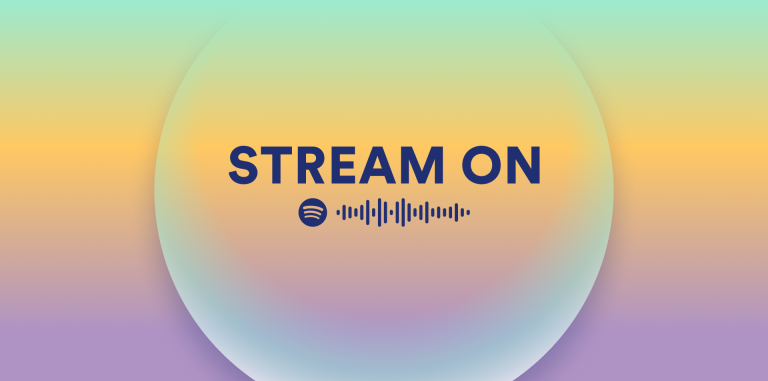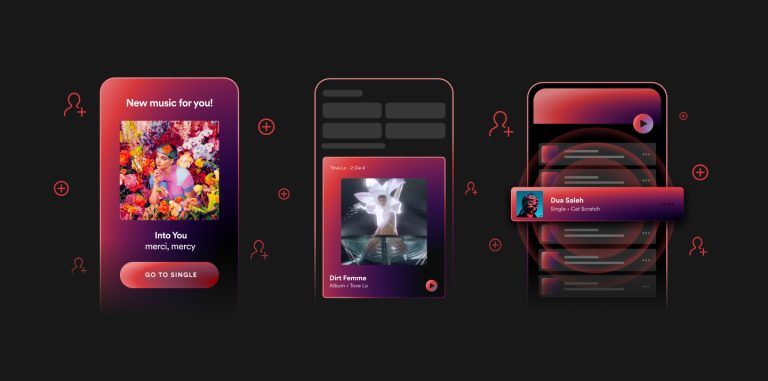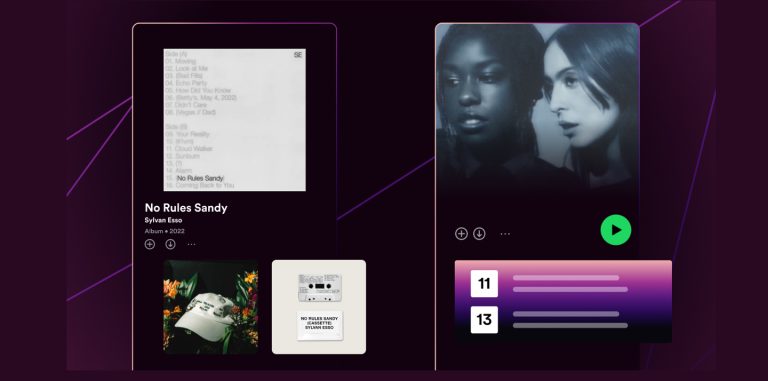
5 Ways Spotify Playlists Help Your Songs Reach Fans Around the World
Today at Stream On, artists, songwriters, producers, podcasters, and authors from around the world joined for the latest announcements and hands-on demos of the new tools and resources coming to our platform. We also hosted our companion event, Play On, which featured a series of talks and interactive sessions that inspired and educated creators about how they can leverage the full potential of our platform.
Among these sessions was a Spotify for Artists Masterclass on playlists and music discovery hosted by Spotify Head of Artist and Industry Partnerships International Bryan Johnson, with panelists including Spotify Global Head of Editorial Sulinna Ong, Spotify Creative Director and Head of Urban Music Carl Cherry, and Spotify Head of Global Hits J.J. Italiano. Over the course of the talk, they dove into the ways artists can use—and maximize—the power of Spotify playlists to help grow their careers.
In recent years, streaming has helped music, and culture at large, cross borders across the world. And one of the main ways fans are discovering new artists is through playlists.
Spotify playlists fall into one of three categories:
- Made by Editors: Curated by our team of editors at Spotify, these playlists consist of beloved global and regional playlists, including Today’s Top Hits and Pollen.
- Made for You: These algorithmically driven playlists—like Discover Weekly and Release Radar—are tailored to each Spotify listener based on their taste profile and on a range of different signals.
- Made by You: These playlists are created by fans who aren’t just sitting back waiting for new music; they’re leaning into artist discovery and actively finding tracks to share with other fans.
So how do these playlists drive artist discovery, exactly? There are five key factors:
1. Spotify playlists are global
Spotify exists in more than 180 markets around the world, and that has allowed us to develop a connected ecosystem of playlists across many different genres and regions. Along with our global offerings, we have thousands of playlists like African Heat, MANSIÓN REGGAETÓN, and K-Pop ON! (온) that help spotlight music coming out of regional and local scenes.
Together, these form our Playlist Pyramid, which starts with our more local and niche playlists, and filters up to our global playlists. Sitting at the top is Today’s Top Hits, which is the biggest and most popular playlist.
For many artists, their Playlist Pyramid journey will start with local or regional playlists. These are often streamed by highly engaged fans who are looking to discover new music, and they give artists a solid platform for building their audience. But from there, an artist can take many paths up the pyramid. When a song starts to perform well, it will be placed in the region’s larger playlists, and it may even be tested in other markets to see how it’s received by an international audience. If the song continues to resonate with fans, the artist can take the next jump up the pyramid, appearing in global playlists like Rap Caviar, Viva Latino, and Mint. And for artists whose songs really hit globally, they could earn a place in Today’s Top Hits.
The rise of Ghanaian singer and rapper Black Sherif is a great example of how this journey can unfold. His lyricism and unique blend of drill, Ghanaian highlife, and trap caught the ears of our editors in Sub-Saharan Africa, which led to his being playlisted in popular local lists like +233 Bars, Asakaa, Ghana Party, and more. As Black Sherif started to perform well on these playlists, he was placed in the region’s top flagship lists—Hot Hits Ghana, No Wahala, and African Heat—which further accelerated his popularity.
Eventually, our hip-hop editors took note of his growing audience, which was starting to cross borders, and supported him across various playlists, including our global flagship playlist for drill, City to City. He has since become an emerging name outside Sub-Saharan Africa and was selected as one of our six RADAR artists in 2022.
2. Spotify playlists are curated
Placements on our editorial playlists are driven by a combination of the cultural knowledge, passion, and expertise of our editorial teams, and the variety of data insights we gather from Spotify’s audience. Crucially, music submitted via the playlist submission tool is the starting point for all songs, and Global Curation Groups, which are tapped into the latest trends and discussion points, can also determine the outcomes of where a song’s journey continues in the editorial ecosystem.
If you’re an artist who wants to better understand the pitching process, the panelists shared a few best practices to get you started:
- Do pitch your music before it’s released: Using our playlist submission tool on Spotify for Artists is the most effective way to pitch new music. To give your track the best chance of getting playlisted—either editorially or algorithmically—we recommend pitching your song at least seven days in advance of its being released.
- Do provide as much info as you can: Our editors love having context when considering a song for placement. Who made it with you? When was it made? Where did you make it? It is also helpful to include any press, music video plans, release schedules, and promotions, as well as the social media accounts linked in your artist profile. If there’s an interesting story around you and/or the song, definitely let us know.
- Do think globally: When you pitch a song for placement, it’s visible to our entire team of editors around the world. They’re also constantly sharing their discoveries with each other. So if there are markets or regions outside of your own where you think your song will attract fans, be sure to include those suggestions when you pitch.
- Do engage your audience: While you can’t pitch your music to us post-release, our editors still look at signals from our broader data to see which songs are resonating. Engaging with your audience and encouraging them to stream your tracks can help build momentum and catch our editors’ attention.
- Don’t pay for playlist placement: You cannot pay to get on an official Spotify playlist. If someone or a third-party company is offering placement on a playlist in exchange for money, this is a streaming manipulation service that goes against Spotify’s guidelines for music promotion. Additionally, we routinely remove user-generated playlists that claim to offer this, so it won’t benefit you in the long run.
- You can only pitch via Spotify for Artists: This is the place where ALL editors go to look for new music, and it’s your route to get your music in front of our editors.
3. Spotify playlists are personalized
Personalization is one of Spotify’s most loved features, drawing upon a multitude of signals to connect the right song to the right ears at the right time. Personalized playlists include not only the aforementioned Discover Weekly and Release Radar, but also playlists like Blend and Daily Mix. They also include playlists like Beast Mode and Songs to Sing in the Shower, which are personalized for each listener but are based on a larger pool of potential tracks chosen by editors.
One-third of all new artist discoveries on Spotify happen in these personalized sessions, which also help to drive future streams from new fans. Submitting a pitch at least seven days before release day via the playlist submission tool also helps ensure that an artist’s new release shows up in their listeners’ Release Radar.
4. Spotify playlists are driven by fans and artists
The majority of Spotify streams come from active streams, where fans are seeking out the music they want to hear by visiting album pages, artists profiles, or liked songs. This also includes streams from listener playlists. These can help signal to Spotify (and to other fans) that we should be paying attention to a particular song or artist. Artists can also engage fans by creating playlists that feature their music, or tracks by other like-minded artists that they’ve worked with and are inspired by. This can not only help to catch the eye of editors when they’re looking at streaming data, but could also lead to visibility on other artists’ profiles.
5. Spotify playlists are timeless
Spotify playlists are composed of the hottest tracks of the moment, as well as classics from the past. That’s because catalog music—or music that is more than 18 months old—maintains a large presence on Spotify. According to our Catalog Fan Study, roughly 75% of active streams consist of catalog music. Furthermore, catalog music has become increasingly popular with younger audiences who are discovering artists from previous generations for the first time.
While artists can’t pitch catalog music, our editors are always looking at the data to see if a catalog song is a good fit for one of our editorial playlists. And if an artist’s catalog song happens to go viral on a playlist, the benefits are sizable: On average, artists can see a 70% jump in streams for the rest of their music.
As you can see, playlists are vital to how fans connect with new artists and how artists engage those new fans. And we’ll continue to use our ecosystem of playlists to support artists as their musical journey unfolds.
Are you an artist looking to get your track on Spotify’s playlists? Visit Spotify for Artists to pitch our editors.






